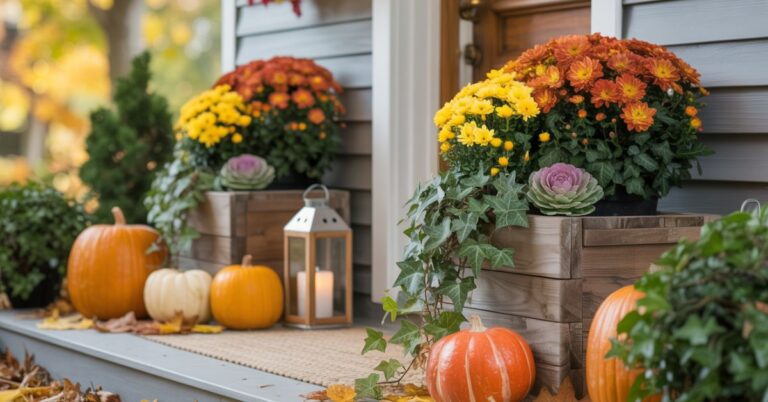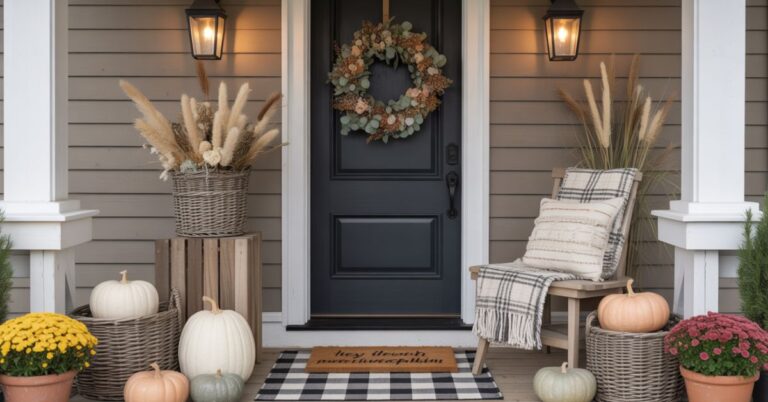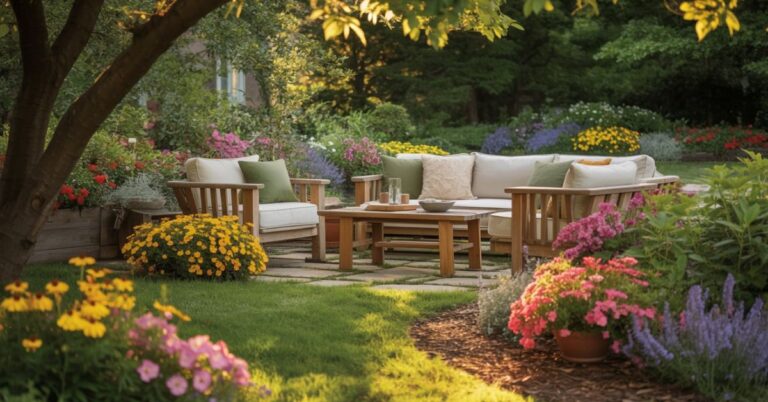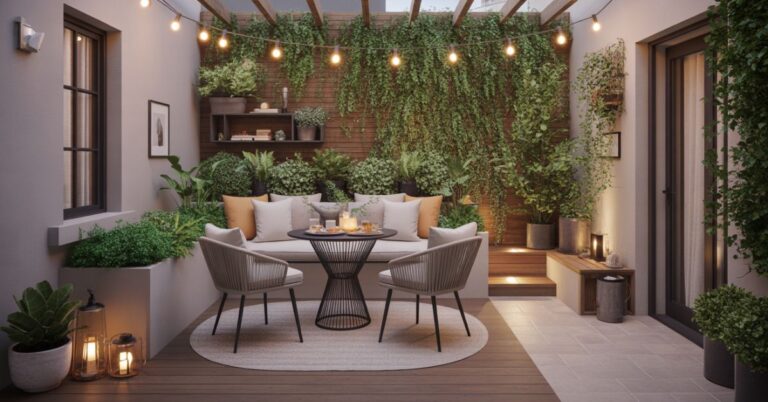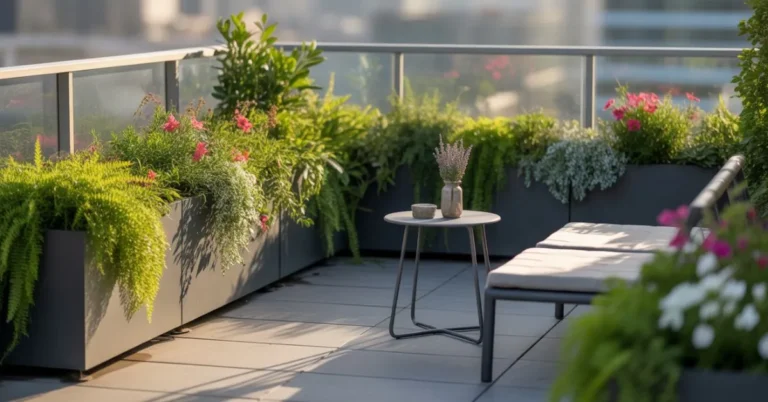Outdoor Patio Ideas with Fire Pit Transform Your Backyard
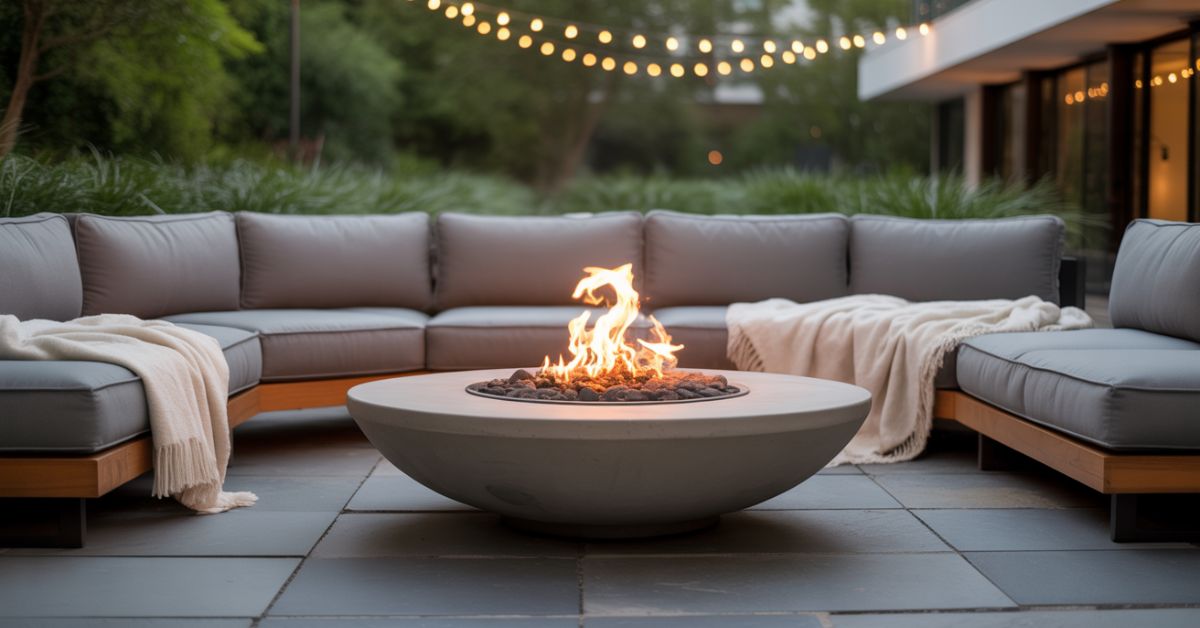
You’ve invested in your home, but your backyard feels incomplete. The space sits empty most evenings while you’re stuck indoors watching TV. Meanwhile, your neighbors are laughing around their glowing fire pit, creating memories under the stars. That unused patio represents missed opportunities for family gatherings, romantic evenings, and memorable celebrations.
The problem gets worse when you realize how much potential you’re wasting. Every weekend that passes is another chance for connection lost. Your outdoor space could be the centerpiece of your home life, but instead it’s just concrete and silence.
The solution? Strategic outdoor patio ideas with fire pit designs that transform dead space into your favorite room. A well-planned fire pit seating area doesn’t just add property value it creates a magnetic gathering spot that pulls people together naturally. This guide reveals exactly how to design, build, and style a patio fire pit layout that becomes the heart of your home.
Why Add a Fire Pit to Your Outdoor Patio?
A fire pit transforms your outdoor living space from functional to phenomenal. The dancing flames create an instant focal point that draws guests outside and keeps them there long after sunset.
Property values tell the story clearly. Homes with quality outdoor patio ideas with fire pit installations see returns between 50-80% of the investment cost, according to real estate data. Beyond numbers, fire pits extend your outdoor season by months, letting you enjoy crisp fall evenings and early spring nights that would otherwise send you inside. The psychological effect matters to people naturally gathering around fire, making your patio the default location for meaningful conversations and authentic connection.
What Are the Best Fire Pit Styles for Patios?
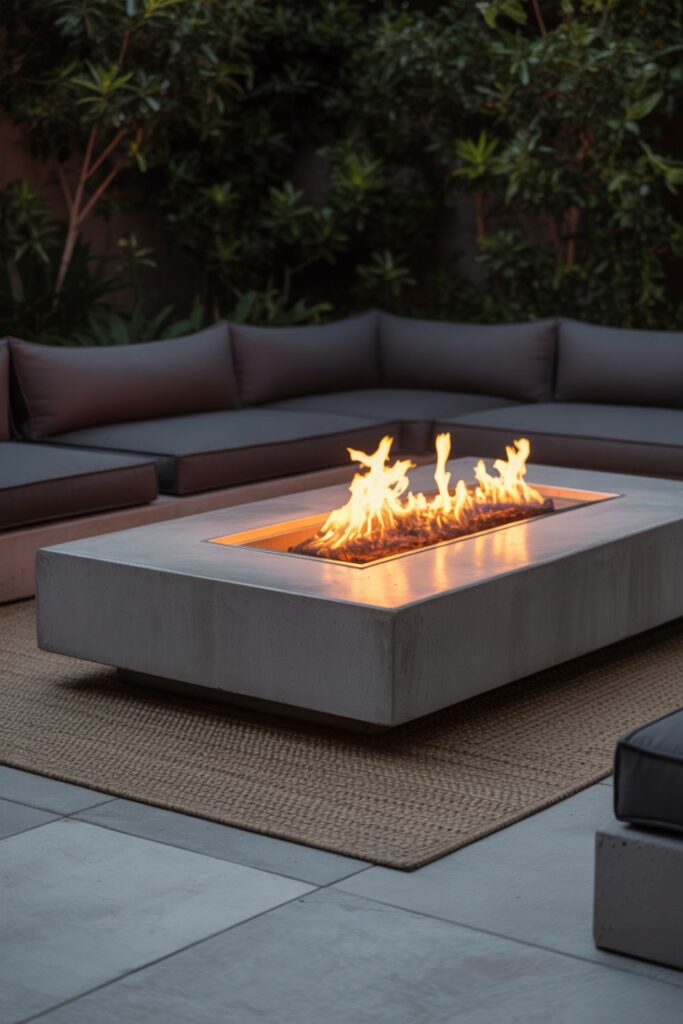
Your fire pit style should match both your aesthetic preferences and practical needs. Each design brings distinct advantages to your backyard fire pit designs.
Built-in fire pits offer permanence and polish. These stone veneer or brick structures become architectural features that anchor your entire patio fire pit layout. They work beautifully with patio pavers and can include custom touches like seating walls or storage compartments for firewood. The downside? You’re committed to that location permanently.
Portable fire pits deliver flexibility. Move them for parties, store them during winter, or take them to new homes. They range from basic metal bowls to sophisticated copper designs. While they lack the visual impact of built-ins, portable units let you experiment with placement before committing to permanent installations.
Tabletop fire features work perfectly for smaller patios where space is limited. These compact units sit on your existing outdoor furniture and create ambiance without consuming valuable square footage. They’re ideal for intimate settings but won’t provide the warmth needed for larger gatherings.
How Do You Choose Between Wood-Burning and Gas Fire Pits?
The wood burning vs propane debate shapes your entire outdoor experience. Each fuel type creates different atmospheres and maintenance requirements.
Wood-burning fire pits deliver authentic crackling sounds and that unmistakable campfire smell. They cost less upfront and need no utility connections. You control flame size by adding or removing logs. However, they require constant attention, produce smoke that bothers some guests, and leave ash requiring disposal. Local regulations increasingly restrict wood burning due to air quality concerns.
Gas fire pits (propane or natural gas) offer push-button convenience. The flames start instantly, burn cleanly without smoke, and shut off completely when you’re done. Temperature control is precise, and there’s no ash cleanup. The tradeoff? Higher installation costs, especially for natural gas lines, and that slightly artificial feel some people notice. Gas also lacks the sensory richness no crackling, no ember watching, no roasting marshmallows directly over flames.
Most homeowners choosing permanent patio fireplace ideas now opt for gas due to convenience and cleaner burning. Those prioritizing authentic campfire experiences still prefer wood despite the extra work.
What Is the Ideal Fire Pit Size for Your Patio?
Fire pit dimensions directly impact both safety and social dynamics. Getting this wrong means wasted space or dangerous overcrowding.
Standard fire pits measure 36-44 inches in diameter for wood-burning models. This size accommodates 6-8 people comfortably while maintaining proper safety clearance from structures. Smaller patios do better with 30-36 inch models that still seat 4-6 guests without dominating the space.
The critical measurement is clearance. Building codes typically require 10-25 feet between your fire pit and any structure, depending on your municipality. Combustible materials like wood fences need even more distance. Before finalizing your patio fire pit layout, verify local regulations/violations create liability issues and force expensive relocations.
Scale matters visually too. A tiny fire pit on a sprawling patio looks lost and inadequate. Conversely, an oversized feature on a small patio overwhelms the space and limits furniture placement. Your fire pit should occupy roughly 15-20% of your total patio area for proper visual balance.
How Should You Arrange Seating Around Your Fire Pit?
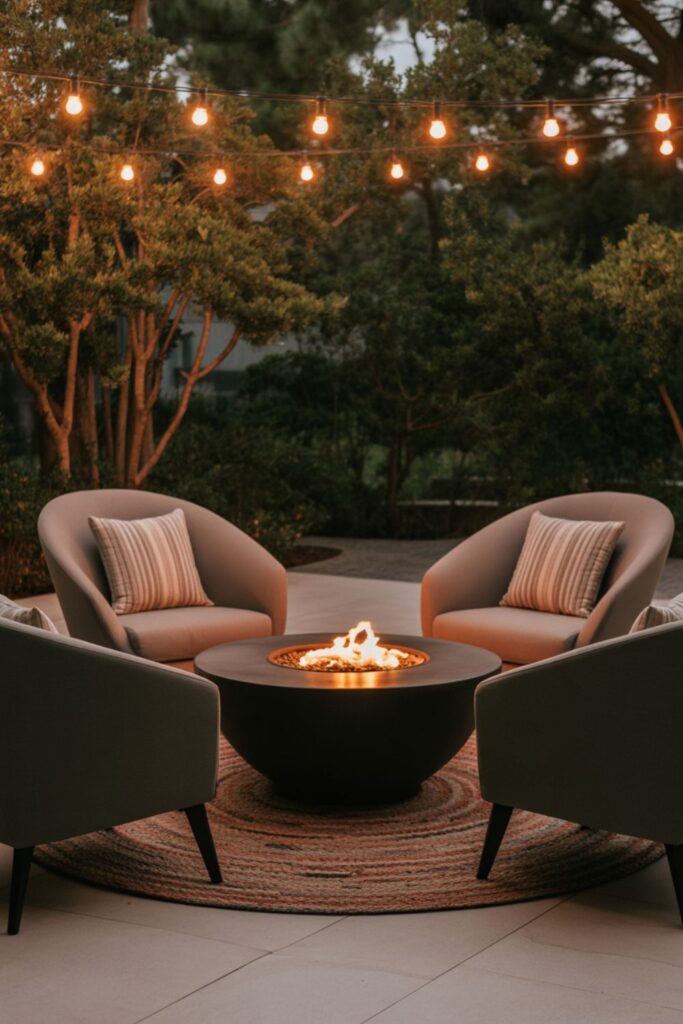
Seating arrangements make or break your fire pit seating area. The wrong setup leaves people straining to see each other or roasting on one side while freezing on the other.
The classic approach is circular seating at a consistent distance from the flames. This equalizes heat distribution and facilitates conversation everyone faces inward naturally. Built-in stone veneer benches work beautifully here, or arrange individual chairs in a complete circle. Leave 18-24 inches between seats for comfortable access.
Semicircular arrangements suit patios with limited space or those backing to walls. Position seating in a 180-degree arc, leaving the back side open for serving or additional standing room. This works especially well when your patio borders your home, as the building blocks wind from one direction.
For larger gatherings, create concentric circles. Inner seating sits closer for intimate conversation and maximum warmth. Outer seating accommodates overflow guests who want the ambiance without the heat. This backyard fire pit design handles groups of 12+ without anyone feeling excluded.
Always include some moveable seating. Fixed benches look fantastic but lack flexibility. Supplement with outdoor furniture you can reposition for different group sizes and weather conditions.
What Are the Best Materials for Fire Pit Patios?
Your patio material choices affect durability, safety, and aesthetics around fire pits. Some materials excel in high-heat environments while others fail dangerously.
Patio pavers made from concrete or natural stone offer the best combination of safety and style. They handle heat exposure without cracking, provide stable footing, and come in countless colors and patterns. Proper installation over a gravel base prevents settling and maintains level surfaces critical for fire pit stability.
Natural stone like flagstone, bluestone, or slate creates upscale appearances that complement stone veneer fire pits beautifully. These materials withstand extreme temperatures and age gracefully. The irregular shapes add organic visual interest, though installation costs run higher than uniform pavers.
Avoid wood decking within fire pit zones. Even composite materials can melt or ignite from stray embers. If your existing deck is the only option, use a fire-resistant pad rated for your fire pit type and maintain generous clearances. Treat this as a temporary solution while planning a proper patio extension.
Gravel works for rustic or budget-conscious projects. It’s permeable, preventing water pooling, and provides excellent drainage. However, gravel shifts underfoot and can scatter outside your defined patio area. Edge it with stone borders to maintain clean boundaries.
Read More About: Outdoor Patio Ideas with Fire Pit: Transform Your Backyard
How Do You Create Ambiance with Fire Pit Lighting?
Ambient lighting extends usability and enhances the magical atmosphere around your outdoor patio ideas with a fire pit. Strategic illumination creates layers of light that feel intentional, not accidental.
Start with path lighting leading to your fire pit seating area. Low-voltage LED fixtures along walkways provide safety without glare. Position them 6-8 feet apart on alternating sides for even coverage. This guides guests safely while setting an inviting tone before they even arrive.
Uplighting adds drama to surrounding landscaping. Place fixtures at the base of trees or architectural features, casting shadows and creating depth. This technique makes your outdoor living space feel professionally designed and extends visual interest beyond the fire pit itself.
String lights overhead deliver instant festivity. Crisscross them above your seating area or drape them from posts or pergola beams. Choose warm-white LEDs over harsh cool-white for better ambiance. Dimmable options let you adjust intensity as the evening progresses.
The fire pit flames should remain your primary light source once darkness falls. Supplemental lighting should enhance, not compete with, that primal glow. Too much artificial light destroys the intimate atmosphere that makes fire pits special.
What Landscaping Works Best Around Fire Pit Patios?
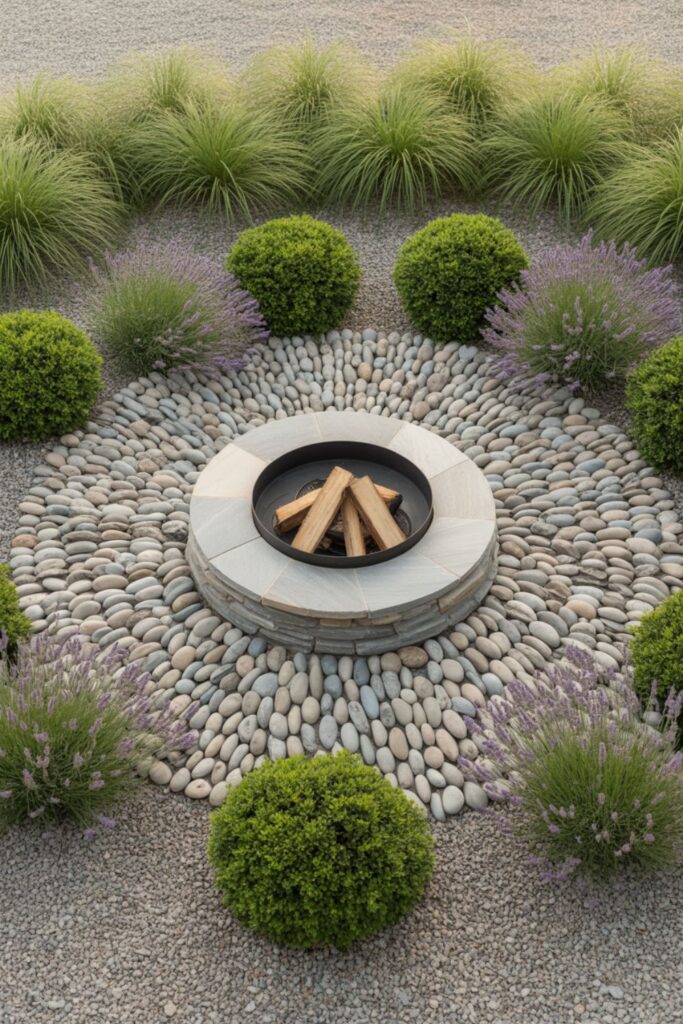
Thoughtful plantings frame your fire pit area while adding privacy and beauty. The key is choosing fire pit materials and plants that coexist safely.
Keep vegetation at least 10 feet from open flames. Within this perimeter, use hardscaping elements like stone veneer walls, boulders, or metal sculptures instead of plants. This creates visual boundaries without introducing combustible materials to the danger zone.
Beyond the immediate area, low-maintenance perennials provide year-round structure. Ornamental grasses like fountain grass or blue fescue add movement and texture without requiring constant trimming. Their height creates enclosure without blocking sightlines.
Evergreen shrubs establish privacy screens that function through all seasons. Boxwoods, hollies, or arborvitae planted in staggered rows create living walls that define your outdoor living space distinctly from neighboring properties. This matters especially for evening gatherings when voices carry farther.
Container gardens offer flexibility around patio fireplace ideas. Large planters with tropicals or flowering annuals can be repositioned seasonally or moved entirely during fire pit use. This lets you refresh your look without permanent landscaping commitments.
Avoid planting directly in narrow gaps between patio pavers. Roots will eventually lift stones, creating tripping hazards and uneven surfaces that compromise fire pit stability.
How Can You Incorporate Cooking Features into Your Fire Pit Design?
Multi-functional fire pit designs maximize value by serving as both gathering spot and outdoor kitchen. The right additions transform basic backyard fire pit designs into culinary centerpieces.
Built-in grill grates are the simplest upgrade. Adjustable grates mounted over the flames let you cook directly on your wood burning fire pit, adding smoky flavor to everything from steaks to vegetables. Swing-arm designs move cooking surfaces over heat or away as needed.
Pizza ovens integrated adjacent to fire pits create authentic wood-fired cooking experiences. These stone veneer or brick structures share infrastructure while serving different purposes. The thermal mass retains heat for hours, allowing for successive pizza batches or bread baking long after flames die down.
Rotisserie attachments mounted above the fire pit handle whole chickens, roasts, or vegetables. Motor-driven models ensure even cooking while you focus on guests. This works best with circular fire pit seating areas where the rotating food becomes part of the entertainment.
For gas fire pits, consider hybrid designs with dedicated cooking burners separate from the ambiance flames. This gives you precise temperature control for serious cooking while maintaining the aesthetic appeal when meals aren’t being prepared.
Storage becomes critical when adding cooking functions. Build compartments for utensils, seasonings, and wood into surrounding walls or nearby structures. Everything should be immediately accessible without leaving the patio fire pit layout.
What Safety Features Should Every Fire Pit Patio Include?
Safety transforms your outdoor patio ideas with fire pit from liability to asset. Smart precautions protect people and property without diminishing enjoyment.
Install spark screens or glass barriers appropriate for your fire pit type. Wood-burning units need mesh screens that block flying embers while allowing heat and visibility. Gas fire pits can use tempered glass panels that provide wind protection and define boundaries without obstructing views.
Fire pit surrounds should include non-combustible fire pit materials extending at least 12 inches beyond the fire bowl. This catches stray embers and prevents grass or debris ignition. Heat-resistant mats work for portable units, while permanent installations need patio pavers or stone in this zone.
Keep fire extinguishers and water sources nearby. Mount a 5-pound ABC extinguisher within 30 feet of your fire pit, visible but not prominently displayed. A garden hose with spray nozzle stored nearby provides backup. These should be accessible to all adults present.
Establish clear safety clearance zones marked by furniture placement or landscaping. Keep combustibles like cushions, decorations, and firewood storage outside a 3-foot perimeter. Make this boundary obvious through your patio fire pit layout so guests naturally respect it.
Carbon monoxide concerns apply mainly to enclosed spaces, but proper ventilation matters even outdoors. Never position fire pits under low-hanging structures or in areas with limited air circulation. Gas fire pits especially need adequate clearance above for combustion gases to dissipate.
How Much Does It Cost to Install a Patio Fire Pit?
Understanding the financial commitment helps you plan outdoor patio ideas with fire pit installations realistically. Costs vary dramatically based on choices you control.
Portable fire pits start under $100 for basic steel bowls and reach $2,000+ for designer copper or stainless models. These plug-and-play solutions require no installation beyond placing them on your existing patio. Budget $150-400 for quality portable units that balance durability and aesthetics.
Built-in wood-burning fire pits using stone veneer or brick cost $1,500-$5,000 for professional installation. DIY projects reduce this to $500-$1,500 in materials, though quality results require masonry experience. These prices assume your patio already existsadding new patio pavers or expanding surface area adds $10-$30 per square foot.
Gas fire pits run $2,500-$7,000 installed, with natural gas models at the high end due to line-running requirements. Propane versions save $500-$1,500 by eliminating underground work. Custom patio fireplace ideas with decorative fire pit materials like cut stone or intricate designs push costs toward $10,000-$15,000.
Professional design services add $500-$2,000 but often prevent expensive mistakes. They ensure proper safety clearance, optimal fire pit seating area flow, and cohesive integration with your existing outdoor living space. This investment pays off through increased functionality and reduced rework.
Ongoing costs favor gas significantly. Propane tanks provide 8-15 hours of burn time at $15-$25 per fill. Natural gas costs $1-$2 per hour of use. Wood burning fire pits consume $30-$50 in firewood monthly during active use, plus time for ash removal and maintenance.
What Are Some Creative Fire Pit Patio Design Ideas?
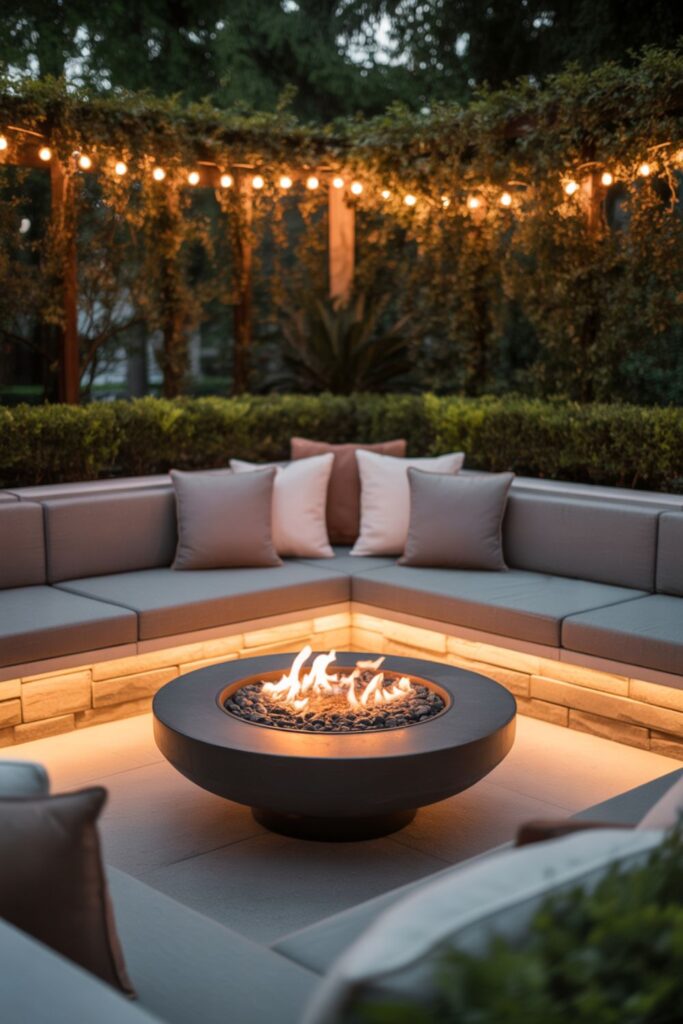
Distinctive backyard fire pit designs elevate your space from ordinary to extraordinary. These concepts inspire personalized outdoor living spaces that reflect your style.
Sunken fire pits create conversation areas that feel separate from the rest of your yard. Excavate 12-18 inches and ring the depression with stone veneer walls that double as seating. This design blocks wind naturally and makes everyone feel connected. It works brilliantly on sloped properties where excavation creates level areas.
Fire pit tables combine dining and ambiance. These elevated designs put flames at table height, allowing meals and conversations without separate areas. Glass surrounds protect diners while maintaining visibility. This patio fire pit layout works perfectly for smaller spaces where dedicated seating zones aren’t feasible.
Water and fire combinations create dramatic contrasts. Install your fire pit in the center of a shallow reflecting pool or surrounded by water features. The juxtaposition of elements creates Instagram-worthy focal points while the water provides additional safety margins. This requires professional installation but delivers unmatched visual impact.
Pergola-covered fire pits extend usability while maintaining open-air ambiance. The overhead structure defines space, supports ambient lighting and outdoor furniture like swings or hanging chairs, and provides partial weather protection. Ensure adequate height (minimum 8 feet clear) and use fire-rated materials for anything above the fire pit.
Multi-level patios with integrated fire pits on the lower tier create natural gathering zones. Steps leading down signal transition from everyday space to special destination. This works especially well on properties with existing elevation changes that you can enhance rather than flatten.
How Do You Maintain Your Fire Pit Patio?
Regular maintenance preserves your investment and ensures safety. The effort required depends on your fire pit type and surrounding fire pit materials.
Wood-burning fire pits need ash removal after each use once fully cooled. Dispose of ashes in metal containers, never plastic, as hidden embers remain hot for days. Inspect the fire bowl quarterly for cracks or rust, addressing issues immediately to prevent failure. Clean the stone veneer or brick surround monthly during use season, removing soot buildup with masonry cleaner and stiff brushes.
Gas fire pits require annual professional inspection of burners, connections, and ignition systems. Check for spider webs or debris blocking burner ports monthly insects love these protected spaces. Clean the glass or fire pit materials surrounding the burner with appropriate cleaners that won’t leave residue. Verify propane tanks remain secured upright and connections show no signs of wear.
Patio pavers around your fire pit seating area need periodic cleaning and re-sanding. Power wash annually to remove accumulated grime, then sweep polymeric sand into joints to prevent weed growth and maintain stability. Address settled or tilted pavers immediately, uneven surfaces create tripping hazards and compromise fire pit stability.
Outdoor furniture cushions should be stored when not in use, especially overnight when dew forms. This prevents mildew and extends fabric life significantly. Wipe down metal or wood furniture frames monthly, applying protective treatments seasonally per manufacturer specifications.
Inspect all ambient lighting fixtures quarterly. Replace burnt bulbs promptly, clean lenses, and verify connections remain weatherproof. Damaged outdoor lighting creates shock hazards and detracts from your carefully planned atmosphere.
Cover your fire pit during extended non-use periods. Quality covers rated for your specific model prevent water accumulation, rust, and debris collection. This simple step can double the lifespan of both portable and built-in units.
‘Read More About: 27+ Outdoor Patio Ideas Small Spaces Modern
What Permits and Regulations Apply to Fire Pit Installation?
Navigating legal requirements prevents expensive problems. Fire pit regulations vary dramatically by location, making local research essential.
Most municipalities require permits for permanent built-in fire pits, especially those connected to gas lines. Applications typically need site plans showing distances from property lines, structures, and overhead obstructions. Inspection occurs before covering underground work and after completion. Permit costs range from $50-$500 depending on project complexity and location.
Portable fire pits usually avoid permit requirements but still must comply with local fire codes. Many cities restrict or ban wood burning during high-risk fire seasons or when air quality alerts are active. Violating burn bans results in fines starting at $500 and potential liability for any fires that spread.
Homeowner associations frequently impose restrictions beyond municipal codes. Review your CC&Rs before purchasing materials, some communities prohibit fire pits entirely or limit them to specific types, sizes, or locations. Violations can require removal at your expense plus potential fines.
Property line setbacks matter significantly. Most codes require fire pits remain 10-25 feet from property boundaries, further if neighboring structures sit near the line. Document these measurements during planning. Disputes with neighbors over smoke, noise, or safety concerns can result in forced relocation regardless of permit status.
Insurance implications deserve attention. Inform your homeowner’s insurance carrier about your outdoor patio ideas with fire pit installation. Some policies require riders for fire pits, while others exclude coverage for fire-related damage entirely. Clarify this before construction discovering coverage gaps after a problem costs far more than premium adjustments upfront.
Frequently Asked Questions
How far should a fire pit be from a house?
Most building codes require fire pits to sit at least 10-25 feet from structures, though 15 feet represents a safe standard distance. Check your local regulations before installation, as requirements vary by municipality, and gas fire pits sometimes allow closer placement than wood burning models. Always verify setbacks from property lines, overhanging trees, and combustible materials like wood siding or decks to ensure full compliance with safety codes.
Can you put a fire pit on a wood deck?
Placing fire pits directly on wood decks is extremely dangerous and typically violates building codes. If you must use your deck, choose a gas fire pit with a fire-resistant pad rated for your specific model, maintain generous clearances from railings and structures, and check your insurance policy. The safer approach involves building a dedicated patio extension using patio pavers or stone that eliminates fire risks entirely while adding property value.
What’s the best size fire pit for a small patio?
Small patios work best with fire pits measuring 30-36 inches in diameter, which comfortably seats 4-6 people without dominating your space. Tabletop models or propane fire pits with smaller footprints deliver ambiance while preserving room for outdoor furniture and movement. Measure your available space carefully, remembering you need at least 3 feet of clearance around the fire pit for safety, plus adequate room for seating and traffic flow to avoid cramped arrangements.
Do fire pits add value to your home?
Quality outdoor patio ideas with fire pit installations typically return 50-80% of costs upon resale, making them solid investments. Real estate professionals report that well-designed outdoor living spaces with fire pits appeal strongly to buyers and help homes sell faster. The value boost depends on quality of installation, integration with overall landscape design, and local market preferences, with permanent built-in fire pits generally adding more value than portable models.
How do you protect pavers around a fire pit?
Protect your patio pavers by using fire pit models with elevated bases that prevent direct heat transfer, installing heat-resistant pads under portable units, and maintaining proper safety clearance from the flames. Choose fire pit materials like stone or concrete patio pavers rated for high heat rather than materials that crack or discolor. Seal your pavers with products designed for high-temperature exposure and clean soot buildup regularly to prevent permanent staining that diminishes appearance.
Conclusion
Your outdoor patio ideas with a fire pit represent more than backyard improvements; they create gathering places that strengthen relationships and build memories. The right patio fire pit layout balances aesthetics with functionality, delivering years of enjoyment while increasing property value. From selecting between wood burning vs propane to choosing complementary patio pavers and ambient lighting, every decision shapes how you’ll use and love your space.
Start by evaluating your specific needs, space constraints, and budget. Research local regulations thoroughly before purchasing materials or breaking ground. Whether you’re installing a simple portable unit or constructing an elaborate stone veneer masterpiece with integrated seating, proper planning prevents costly mistakes. Your fire pit seating area should feel natural and inviting, pulling people outside whenever weather permits. Take action now to design the outdoor living space you’ve been imagining your family and friends will thank you every time they gather around those dancing flames.

